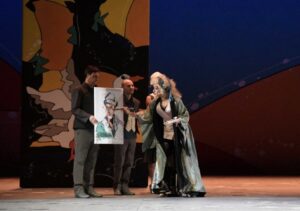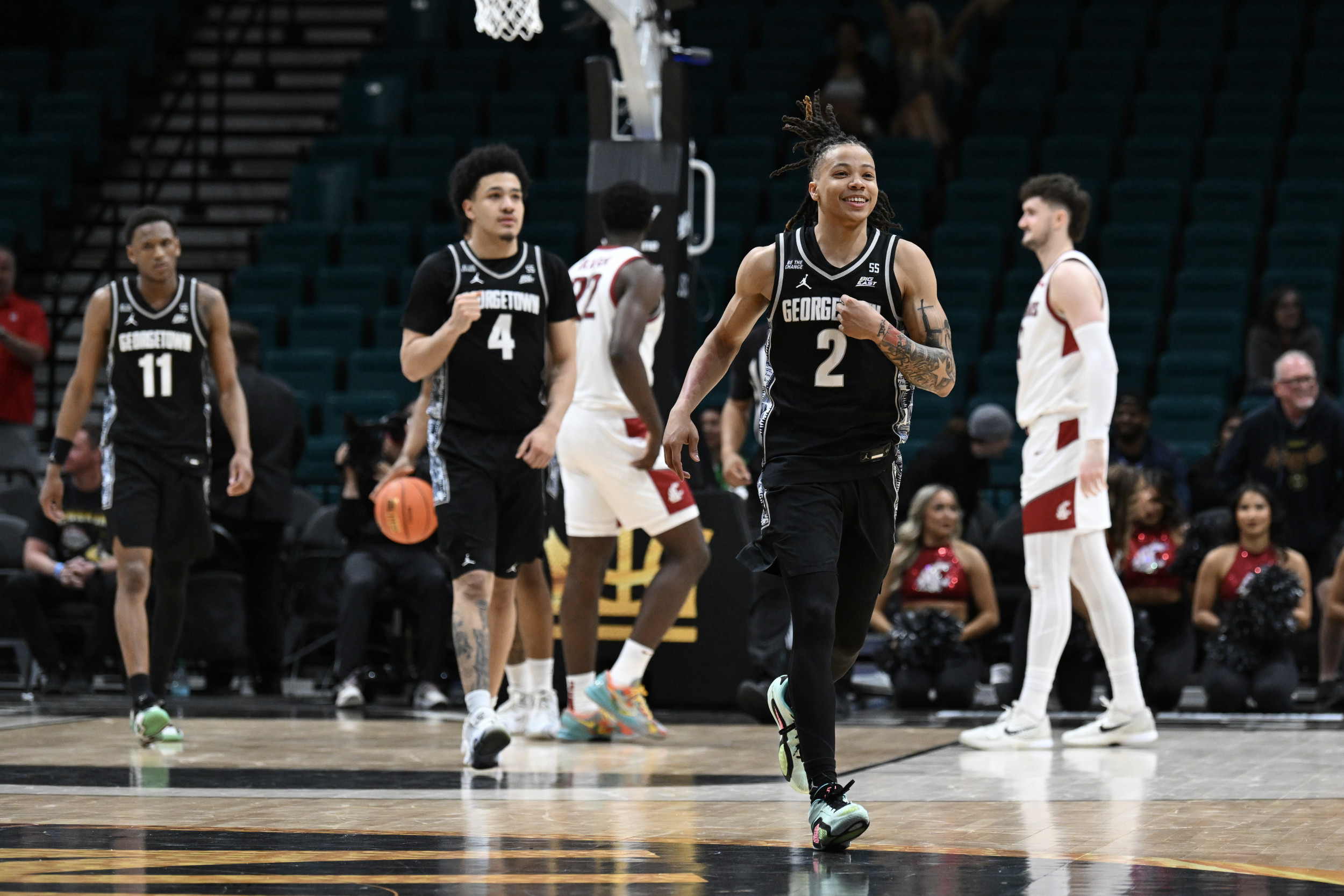
(Photo: Michele Crosera)Although the Sicilian composer Alessandro Scarlatti (1660–1725) is famed for his prolific output of operas–he claimed to have written well over 100–which were significant in laying the foundations for the development of 18th century opera seria, he rarely strayed into the field of comic opera. The single major exception was his 1718 work, “Il trionfo dell’onore,” written for Naples’ Teatro Fiorentini, to a libretto by Francesco Antonio Tullio, which captured the attention by having all the characters sing in Italian, rather than the Neapolitan dialect. It proved to be a great success, receiving a further 18 performances.
Soon after, it disappeared and did not reappear until the 20th century, receiving only occasional presentations. Venice’s Teatro La Fenice has now added itself to the list with a run of five performances, conducted by Enrico Onofri and directed by Stefano Vizioli.The narrative is based around the dissolute life of Riccardo, a typical Don Juan figure, similar to Mozart’s Don Giovanni, but who is a feckless rather than a vicious character.

Eventually, he repents and is reconciled with Leonora, who, like Donna Elvira, has always loved him, despite his betrayal. The drama follows Riccardo’s exploits as he tries to avoid Leonora against a background web of complicated love relationships, involving three other couples, who pursue, betray and squabble with each other. It all takes place with a light-hearted playfulness and ends with the expected lieto fine.
Inconsistently Amusing but Ultimately a Pleasing PresentationThe eight characters are clearly defined and immediately recognizable, although psychologically slightly more developed than simple stock characters. Most obviously, Riccardo is a tame version of Don Juan, while two of the couples are drawn directly from the commedia dell’arte: Rosina is a cheeky, worldly-wise maid, Captain Rodimarte is full of false bravado, Flaminio is a lustful old goat, and Cornelia is a lustful old woman. The remaining three consist of Leonora, the earnest and jealous Erminio and the flirtatious Doralice, who is also in love with Riccardo.
Together, they make for a disparate group of characters who follow their own agendas with amusing consequences.Unsurprisingly, Vizioli’s focus was clearly on promoting the comedy, a theatrical mode for which he has natural flair. In this case, however, his success proved to be somewhat inconsistent; for the first hour or so, the drama trundled along and failed to generate much in the way of amusement.
The ideas were present, but in practice they fell flat. The audience barely managed a titter, let alone open laughter. Following the interval, however, there was a definite change; there was now more of a sparkle and vibrancy about the performance.
Ideas that would have passed by with little response now had the audience laughing out loud, and there was plenty to laugh at! By the time the final curtain fell, everyone in the audience seemed fully engaged and convinced by the onstage fun and games.The sets and costumes, designed by Ugo Nespolo, were simple yet proved to be very successful. The scenery consisted of panels depicting comic-book depictions of birds in bright, bold colors of reds, yellows and blues, which drew parallels with the competitive antics of the four couples trying to form sexual connections, although they were never related directly to a specific person.
There were pictures of squabbling geese, a confident cockerel, a wise owl watching over the proceedings and so on. They gave the sets an abstract or childlike feel, depending upon how one wished to view them. But either way, they were very colorful and successfully provided a pleasing framing device for the drama to take place.
Similarly, Nespolo’s costume designs were very colorful and added to the aesthetic appeal of the presentation and were not linked to a specific time period but used to reinforce their characters. Captain Rodimarte was dressed as 17th century cavalier, Rosina as a maid, while Doralice was costumed in modern clothing and so on.It was by no means a spectacular staging, but it lay easily on the eye and suited the comedic tenor of the work.
A Cohesive and Convincing Musical Reading Overseen by OnofriRather than simply a string of arias separated by recitatives, Scarlatti reacted to the complex interplay of the characters by adding a series of ensemble pieces to the mix, which provided the drama with more energy and movement while adding a greater degree of variety to the musical textures.The musical director, Enrico Onofri, produced a wonderful performance from the Orchestra del Teatro La Fenice, successfully capturing the sunny and warm vitality of Scarlatti’s music. The sound was elegant and refined with the necessary vitality and energy to support the drama.
Onofri was also attentive to the textural clarity, which he presented in beautiful detail, and ensured a pleasing balance with the singers.Soprano Giulia Bolcato seemed to really enjoy herself playing the role of the rakish Riccardo. Deliberately adopting exaggerated manly postures, she swaggered around the stage with an air of bravado and a roving eye; no woman could pass by without attracting Riccardo’s attention.
It was all done with a sense of fun that successfully captured the spirit of the work. Vocally, she was in fine form, confidently knocking out a series of arias that displayed excellent control and versatility with imaginatively crafted elaborations topped by an impressive coloratura. Each aria was neatly rendered to reflect her character’s emotional state: in “E ben far come l’ape” she voices Riccardo’s outlook on life, likening him to a bee that is happy to move from flower to flower without any commitment, which she delivered with beautiful ornamentations and a carefree flourish, while for “Ricevi il mio core” she displayed a very different face as she reconciled with Leonora, singing with a depth of sensitivity and expressive sympathy that she had so far suppressed.
Poor Leonora, seduced and then abandoned by Riccardo, was played by mezzo soprano Rosa Bove. Although she is attempting to track down the rogue, with whom she is deeply in love, she is no Don Elvira; she does not possess the energy or aggression and is even prepared to commit suicide rather than fight for him. Bove produced a solid, if occasionally inconsistent, portrait, in which the overall impression was one of passivity.
There were, however, some nicely presented arias. “Or che un amore si bello,” for example, was expressively strong and showed off the pleasing colors of her voice, while in the slow-moving aria “Sospirando,” she captured the beauty of the melody, although she failed to carry the full weight of the emotion. Overall, it was a performance that successfully had the audience sympathizing with her character.
Soprano Francesca Lombardi Mazzulli produced a strong, bright and animated reading of the flirtatious Doralice, immersing herself fully in her character, which helped add dramatic energy to her recitatives. Arias were well-presented, impressively so in the case of “E sento consola,” which she embellished with a thrilling coloratura display. Her duet with Lenora also stood out as the two women’s contrasting voices blended beautifully as they sympathized with each other’s plight while privately confiding to the audience that they loved Riccardo.
In comparison with Riccardo, Erminio is not the most exciting of characters; he is an earnest, honest and straightforward sort. He only really comes to life in Act three on discovering that Doralice is about to abscond with Riccardo, which ends with a duel in which he wounds his rival. Countertenor Raffaele Pe made the most of the role with a forcefully sung and dramatically convincing portrayal.
The aria “Chi vuole tormi la bella” was the high point of his presentation, in which, raging at Doralice’s betrayal, he expressed his feelings with a spectacular vocal display that showed off his thrilling coloratura.Tenor Dave Monaco as Flaminio took a little time to warm up; it was not until after the interval that he managed to stamp his authority on the role, whereupon he lit up the stage with his comedic antics, which included a heavy dose of slapstick. His duet with Rosina was particularly funny.
Likewise, his singing took on a more vibrant and animated humor that made his fast-moving interactions lively affairs.The bearded tenor Luca Cervoni could not fail but to make a strong impression as he deliberately played up the fact that he was a man in the role of the aging Cornelia. In what was an excellent performance, he was often at the centre of the comic incidents, engaging in plenty of slapstick moments, over-the-top posturing and chaotic nonsense.
He produced a lively vocal display, in which he shifted the tone of the voice rapidly to exaggerate Cornelia’s emotional volatility while also highlighting the mix of genders.It is always a delight to hear the sensuous voice of mezzo-soprano Giuseppina Bridelli, although this is the first time I have had the pleasure of reviewing her in a comic work. Cast as the maid Rosina, she produced a strong characterization, convincingly fashioning her recitatives to portray her as a woman who knows exactly how to handle the likes of Flaminio and Captain Rodimarte.
Arias were sensitively and colorfully rendered, notably so in the case of “Vi par che siate robba” which wonderfully caught the maid’s playful nature and showed off her vocal flexibility to good effect. Her quick patter duet with Rodimarte, sung while giving him a bath, was amusing and expertly sung.Baritone Tommaso Barea played up the role of Capitano Rodimarte for all it was worth as he strutted confidently around the stage with an absurd degree of overconfidence to reaffirm his manliness that made his innate cowardice all the more amusing.
In fact, almost everything he did was designed to provoke laughter. He possesses a well-balanced, well-supported voice with a pleasing timbre and delivered both set numbers and recitatives with a real flourish. His aria “Quando ruoto feroce il mio brando,” for which he produced a vigorous and expressive rendition while playing with a cannon, which he used to fire flowers at Ricardo, summed up his characterization perfectly.
Overall, this was an oddly imbalanced presentation, albeit not from a musical standpoint, which was very good indeed. The three acts were divided into two equal parts, each of which had a very different impact. While the first half struggled to gain dramatic momentum and the comedy never took to the wing, the second half possessed an energetic pace that drew in the audience while the comedy had everyone laughing along.
The post Teatro La Fenice 2024-25 Review: Il trionfo dell’onore appeared first on OperaWire..















